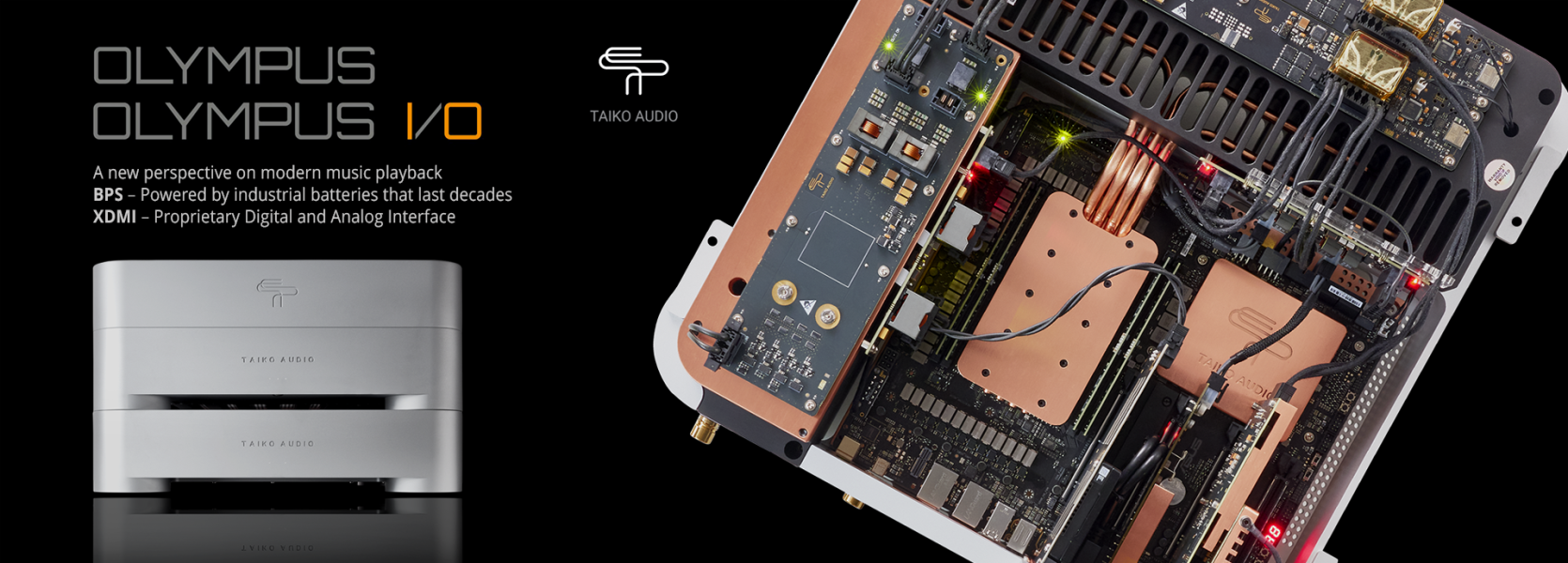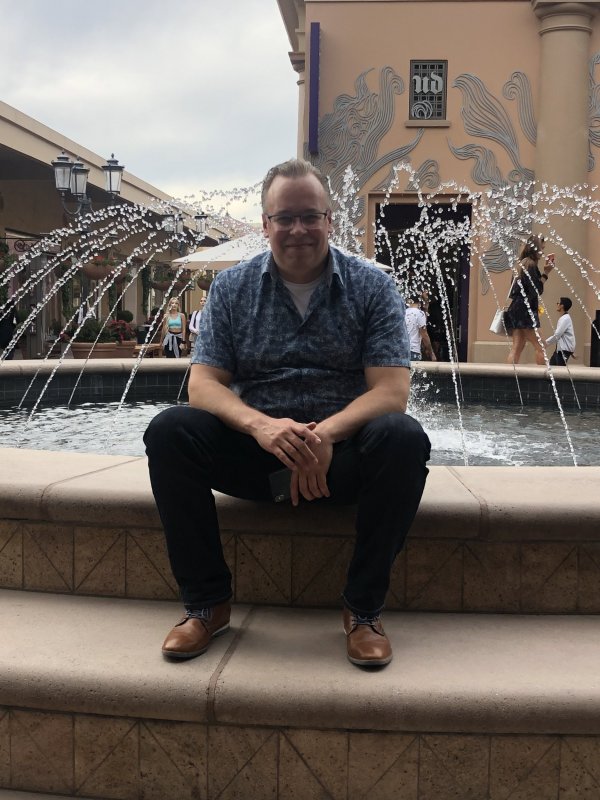I watched Christoph do for my ears the single best experiment and A-B test of the few days he was here. First off there is no question that significant burn in of the unit is essential as I have had my Olympus and Horizon powered on with my preamp and amp off. The Olympus was playing in a constant circle and each day there was a noticeable improvement in SQ. Today Chris was interested in comparing a track on vinyl and comparing it to a similar track streaming via Tidal, Qobuz or from my library now based on my NAS downstairs well away from my system and plugged into my home router. Chris wanted to get an idea where things compared on the Olympus too that on my turntable. We riffled through a bunch of albums I happened to have in my sound room and Chris picked out the remaster of Amused to Death and arbitrarily asked me to cue up Three Wishes and to play it at my customary level. After some warm up of my phono stage and turn table the track was cued up and the needle dropped. it sounded spectacular, more so than usual now that the Schnerzinger Grid Protector is now in my room. Chris was impressed
Next he cued up from Tidal via Roon the same album version and track. The Horizon was passing full signal with its output at 63 and my preamp at the 6 detente position. For power cords I still had Chin Cheng PC's in both Olympus and IO. Play was started and it sounded extremely good and very close to vinyl with a slightly different flavor. If the vinyl version was worth $1 , the digital version was worth $0.95 . The next part of the test was when Chris wanted to play the same track but with the horizon gain dialed back to 57 (less than the full signal). Volume level on my Lamm preamp remained unchanged at the 6 detente position. Play was started and Chris looked at me and I too him as we both said WTF just happened. The sound was very nice, but best description by both of us was that it sounded on th polite side and lacking detail, Again the comparison wa if vinyl version was worth $1 then this same track dialed back to Horizon gain of 57 and Lamm preamp unchanged at position 6 was now worth $0.90. We both agreed that full signal out of the Horizon simply put had more detail and more meat on the bone
The king on the cake however for both of us was when Chris said, let's see what the Masterbuilt Ultra Power Cord brings to the table if the Chin Cheng was removed from the Olympus and substituted with the MasterBuilt Ultra. Same track was cued up with Horizon gain at 63 , Lamm preamp at detente position 6. The song was repeated streamed through Tidal using Roon and both of our jaws dropped. It was an epiphany for both of us as it easily proved what Emile said, and substantiated by Vassil that there is a huge uptick in sound quality with a proven power cord. Both Chris and I said that this was damn close to the vinyl version we played. In fact, if the vinyl version was worth $1, this stream tidal version, passing full signal through the Horizon (63) and now with a MasterBuilt Ultra in the Olympus this version was now worth easily $0.98. It truly was that close. Further Chris found a very secure way to plug in the Power Cord which , did not budge with gravity It was the most impressive comparison fore my ears that we did all these past 3 days. There is a huge gain to be achieved with the use of a quality Power Cord. The Chin Cheng was instantly retired. I then questioned Chris as to what further benefit would be gleaned if a similar power cord was used in the IO. Without any hesitationChris said, "not necessary" and went through a detailed explanation as to why my Chin Cheng would be just fine
I would encourage all Olympus/O owners to try this very simple experiment . It is so obvious that it smacks you in the face.
So also the Horizon has so much more detail when the full signal is passed. Dialed back on 6 click to 57 created a very beautiful but very lean sound, lacking in detail and emotional engagement
So as the sun sets here on Chris visit, I have learned a lot
1. Be patient and let your Olympus play even with out sound fir reveal days and each day you will notice a change
2. Native XDMI is the real McCoy. I have zero idea how it works and what it does and honestly that is Emile's trade secret and his secret sauce. I'm convinced that XDMI will become the de facto interface for all high end systems . I say this only having listened via the digital card, using a KBL XDMI cable and with the better version of this coming next week with my Horizon 360
3. If you use a Lampi via XDMI or USB, the SQ unequivocally is better with the Horzon out put at 63
4. Power cords matter.....they matter a lot
5. USB on the Olympus compared to the Extreme is vastly superior but lacks so much when compared to the Olympus played with XDMI
6. At a personal level the Taiko BPS app is a set it and forget it . Set the charge to auto, and allow charging time as suppled , between midnight and 0700 and youre done
6. I have not listened yet with the power cords removed. Not sure for now that I will but at some point I will explore that path
7.. Please dont blame Chris for being here and not in Oldenzaal. He has nothing to do with building these machines and no one's valuable time was wasted by his presence at my house.. Emile and Taiko should be proud to have him as their General Manager. Chris is a gentleman and a scholar and you never know if he might show up unexpectedly on your door step for a listen
8. I learned a lot about truffles, truffle season and going on truffle hunts from Chris in a totally unrelated discussion
9. Finally some photos below to share with everyone as Chris and I spent our final lunch at my favorite restaurant for ambience and good food. I love to take all my guests there and watch their faces










